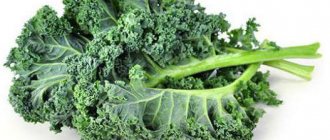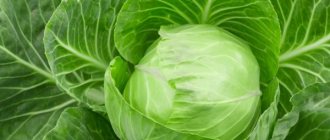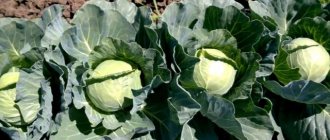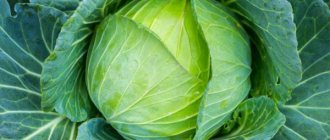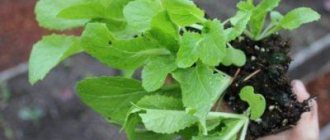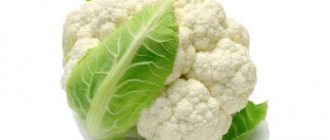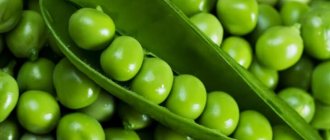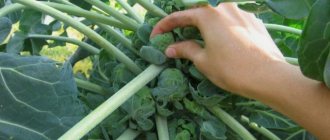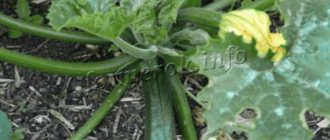Botanical description
Pak choi is an early ripening variety. An adult plant does not create a head of cabbage, but forms a lush rosette of leaves, which reaches a height of 20 to 60 cm, a diameter of 40 to 45 cm. More reminiscent of lettuce rather than cabbage. The leaves are located on thick and fleshy cuttings with an external convexity, tightly pressed to each other. The leaf is large, tender, slightly corrugated. Based on the color of the leaf blade and petioles, there are 3 main types:
- Joi Choi. Bright dark green leaves grow on white petioles.
- Shanghai Green. Both the leaves and petioles are light green. The leaves are slightly darker.
- Red Choi. The petioles are green, and the leaves are green below and red-violet above.
Variety Joi Choi
Shanghai Green Pak Choi
Red Choi variety
After germination, the cabbage forms a leaf rosette, and after complete ripening, it throws out an arrow with flowers. After the peduncle of varietal cabbage has matured, the seeds can be collected.
Pak choi has a branched, thin, superficial root system. The depth of occurrence does not exceed 15 cm.
Asian touring performer - famous pak choi
Pak choi or Chinese cabbage (Brassica rapa ssp. chinensis) is one of the oldest vegetable crops in China, which today enjoys enormous popularity in Asian countries and is increasingly gaining fans in European countries. A close relative of Chinese cabbage, it differs from it in appearance, biology, and economic qualities. Gardeners often confuse these plants, although they are completely different cabbage.
Chinese cabbage pak choi Prima F1
In our country, pak choy can not often be found in the garden, although in terms of medicinal and dietary properties it is more useful than cabbage cabbage, in cold resistance it is not inferior to cabbage species, and some of its varieties are even significantly superior in this criterion.
Although this plant belongs to the cabbage family, it does not form heads of cabbage; it is classified as green (salad) vegetables.
Chinese cabbage is extremely healthy. It is very rich in vitamins: C – up to 130 mg%, P – up to 180 mg%, carotene – up to 2 mg%; contains up to 90 mg% chlorophyll, as well as potassium, phosphorus, and magnesium salts. But its main value is its high content of lysine, an essential amino acid for the human body, which is generally rarely found in vegetable plants. Lysine dramatically increases the human body's resistance to diseases and has the ability to dissolve foreign proteins that enter the human blood. Therefore, regular consumption of this cabbage significantly reduces the risk of cancer.
There are two varieties of this culture. One has dark green leaves and bright white petioles. The other has both leaves and petioles light green.
Pak choy forms an erect, compact rosette of leaves up to 35 cm in diameter. The leaves are on thick, succulent petioles, smooth or vesicular, the color of which ranges from grayish to light blue-green. The leaves have wide, succulent petioles. Compared to Chinese cabbage, this plant is more winter-hardy, shorter in growth and does not form a head of cabbage.
In the countries of the Far East, there are many varieties of this representative of cabbages. But it has only recently been grown in Russia, so there are few regionalized varieties.
Chinese cabbage pak choi Swallow
- Alyonushka is a variety with a medium-sized leaf rosette. The petiole is fleshy, medium length, wide, thick, green.
- Vesnyanka is an ultra-early leafy variety for open and protected ground. Shoots appear on 3–4 days, the first harvest after 20–25 days. The rosette is semi-raised, densely leafy, up to 35 cm high.
- Swallow is an early ripening petiole variety of Chinese cabbage. The petioles are juicy, white, fleshy. The mass of plants can reach 1 kg or more, with more than half of it being petioles.
- Lebedushka is a mid-season (40–45 days) variety. The leaf rosette is erect, up to 40 cm in diameter and up to 50 cm in height. Plant weight is up to 1 kg. The petioles are bright white, up to 35 cm long, accounting for up to 80% of the plant’s mass. The variety is relatively resistant to early stemming, resistant to adverse weather conditions, and suitable for dense planting.
- Pava is a mid-season hybrid of Chinese and Chinese cabbage. Combines large leaves and wide, dense, crispy petioles. The leaves are bright green, the petioles are white, fleshy, juicy, without fibers. Absolutely resistant to stemming, so you can sow at any time. The plants are very decorative and are well preserved after cutting.
This is a very early ripening, unpretentious and cold-resistant crop. It produces good yields on neutral or slightly acidic soils rich in organic matter and provided with moisture. Very responsive to the application of mineral fertilizers.
It cannot be placed in the garden after cabbage and all its relatives, because... Their diseases and pests are similar; under no circumstances should they be treated with chemicals during the growing season. However, it is quite resistant to diseases, and ordinary ash will help against cruciferous flea flea beetles.
Its root system is located in the surface layer of soil 10–15 cm thick; the roots are thin and highly branched. The plant is an annual, blooms like white cabbage; cross-pollination is possible only with Chinese cabbage.
The leaves are coarser than those of the Beijing plant, but it does not tolerate air temperatures above +25°C, and it may cause burns. Loves fertile, nutrient-rich soil, cool climate, high soil and air humidity. The plant retains its commercial qualities for a long time, and it can be gradually, as needed, eaten.
With early sowings in early April, only a small part of the plants bloom. When sown in late April and May, when day length approaches maximum, the plants shoot up a flower stalk and bloom. Therefore, it is better to sow its seeds in mid-July–early August. On average, 45–50 days pass from sowing to harvesting, and the plants will have time to form large rosettes before frost.
The soil for pak choy, as for other cabbage plants, must be prepared in the fall. Before digging, organic fertilizers are added to the soil - 1 bucket per 1 square meter. meter, 1 tbsp. a spoonful of superphosphate and potash fertilizers and lime (if required). In the spring, as soon as the soil allows, it is loosened to reduce moisture evaporation. On the eve of sowing cabbage, the soil is loosened or dug to a depth of 12–15 cm without turning the layer, after adding urea - 1 teaspoon per 1 square meter. meter. If organic fertilizers were not applied during autumn digging, then during spring digging it is necessary to add humus at the rate of 1 bucket per 1 square meter. meter.
It is better to grow this cabbage by sowing seeds in the ground in early May or by seedlings in pots, because... She does not tolerate the transplant well. After sowing the seeds, the bed is covered with film.
When growing seedlings in pots, the soil mixture is made very loose. Seeds begin to be sown from the end of March at several times with an interval of 10 days. Seedlings ready for planting at the age of 20–25 days should have 4–5 true leaves.
When sown in the ground, seeds are sown in rows with a distance of 30 cm between them or in nests. Shoots appear on the 7–10th day. At this time, their main enemy is the cruciferous flea beetle, which can turn seedlings into lace. Therefore, the bed must be pollinated with ash even before germination. In the phase of the first true leaf, plants are thinned to a distance of 15–20 cm.
A higher yield is obtained by sowing seeds in late July–early August. Seeds are sown in rows with row spacing up to 40 cm; after the first thinning, 20–25 cm are left between plants. At this time, as a rule, the soil lacks moisture, so to obtain a good harvest, abundant watering is required, followed by shallow loosening. In dry weather, refreshing watering of the leaves is also required, preferably by sprinkling.
During the growing season, Chinese cabbage must be fed twice with a solution of mullein (1:8) or bird droppings (1:12), and in their absence - with nitrophoska (30 grams per 10 liters of water).
When harvesting, the plants must be pulled out by the roots, which should then be cut off at the base of the petioles, and the outer leaves removed. If you remove the plants before frost and bury them in damp sand in the basement, then under these conditions the crop can be stored for 2-3 months.
The leaves along with the petioles are eaten. The petioles of Chinese cabbage do not become coarse and remain juicy, crispy and tender all the time. They have a pleasant original cabbage taste without bitterness.
This type of cabbage is used for preparing salads, soups, and side dishes. It can be fried, stewed, and boiled. It is suitable for pickling, salting, and drying.
Popular varieties
Many varieties of Pak Choi are included in the State Register of Breeding Achievements. All of them are recommended for cultivation in private farms and consumption.
Table of varieties of Pak choi cabbage:
| Variety name | Growing season, days | Productivity, kg/sq. m | Plant weight, g | Description |
| Alyonushka | 45 | 9 | 1800 | Semi-spreading rosette. Small dark green leaves with a grayish tint, the petiole is fleshy. |
| Stonefly | 25-35 | 2,7 | 250 | The socket is half raised. The leaf is light or green in color, slightly wavy along the edge, the central vein is fleshy and juicy. |
| Vitavir | 25-35 | 6,2 | 500-700 | Low, semi-spreading socket. The leaf is short, somewhat pubescent, with a wavy edge. The petiole is medium thick, short, green. |
| Golub | 25-35 | 6 | 600-900 | Rosette with a diameter of 40 cm. The leaf is medium, light green, smooth. The petiole is of medium thickness, wide, short. |
| Corolla | 50-60 | 5 | 1000 | The rosette is spreading and small. The leaves are round, smooth along the edges, dark green. The petiole is narrow, short, white. |
| Beauty of the East | 35-45 | 6 | 700 | The rosette is vertical, medium size. The leaf is smooth, with smooth edges, green. The petiole is medium, light green. |
| Martin | 35-45 | 10 | 1500-3000 | Semi-raised socket. The leaves are smooth and green. The petioles are fleshy, juicy, green in color. |
| Swan | 50-60 | 5-7,5 | 1100-1500 | The rosette grows horizontally. Leaves are oval, whole. The petiole is fleshy, white, long. |
| Peahen | 50-60 | 10 | 1000-2000 | Semi-straight socket. The leaves are oval, smooth, green. The petiole is fleshy, without fibers, crunchy. |
| In memory of Popova | 35-45 | 10 | 800 | Medium sized semi-opening socket. The leaves are green, smooth with a faint wave along the edge. Petioles are white, flat, medium size. |
| Chill | 50-60 | 6,5 | 1500 | The rosette is semi-spreading, medium-large. The leaf is light green, smooth. The petioles are the same color as the leaves and are flat. |
| Four seasons | 35-45 | 7,5 | 1350 | Medium sized semi-opening socket. The leaf is green, smooth. The petioles are lighter than the leaves, thick and wide. |
| Chingensai | 35-45 | 3 | 120 | The socket is compact. The leaves are even along the edges, smooth, green. The petioles are of medium thickness, lighter than the main color, and short. |
| Yuna | 50-60 | 5 | 800-1000 | Semi-opening socket. The leaves are medium-sized, dark green, dissected, wavy along the edge. The petioles are narrow and green. |
Beneficial features
The Chinese, like no other, know a lot about proper nutrition. This amazing nation tries to include in its diet only those foods that will benefit the body. That is why pak choi cabbage was appreciated by them many centuries ago, and enjoys well-deserved popularity to this day.
Chinese cabbage is a great choice for people trying to lose weight. After all, the culture not only contains a minimum of calories, it also helps burn fat.
People in the Celestial Empire have long been aware of the amazing healing properties of cabbage. Chinese doctors recommend their patients to use pak choy for various diseases of the gastrointestinal tract, vascular diseases and even heart diseases. The vegetable is often used to treat anemia.
The bactericidal properties of cabbage make it possible to use it for the speedy healing of burns, wounds and even ulcers.
The bactericidal properties of cabbage allow it to be used for wound healing
Pak choy contains an incredibly large amount of vitamins, minerals, micro- and macroelements.
Important! Pak choi is highly recommended for women expecting a baby. The vegetable contains folic acid, which is so necessary during pregnancy. It has been scientifically proven that eating Chinese cabbage in all trimesters prevents the occurrence of defects in the fetus.
Useful properties of Pak choy and its harm
95% of Pak choi cabbage consists of water, and also contains many vitamins (A, C, K, PP, B1, B2, B9) and minerals (potassium, calcium, magnesium, manganese, iron, sodium, phosphorus, zinc). It is a dietary product containing only 13 kcal per 100 g.
Beneficial effects on the body:
- cleanses of toxins and harmful cholesterol;
- improves vascular elasticity, normalizes blood pressure, supports the heart;
- promotes skin cell renewal;
- helps wound healing, improves blood clotting and hematopoiesis;
- used as cancer prevention;
- improves immunity.
But there are some precautions in use:
- the vegetable contains glucosinolates, which, if consumed in excess, are harmful to the body;
- the enzyme myrosinase, which is found in all cruciferous vegetables, negatively affects the functioning of the thyroid gland and interferes with the absorption of iodine;
To prevent the negative influence of the enzyme, cabbage is subjected to heat treatment.
- for those who suffer from thick blood pathology and take medications that thin it, the use of Pak Choi is contraindicated;
- People with allergies to any types of cabbage should use with caution.
Features of an overseas guest
Unlike white cabbage, pak choy has several specific features:
- The plant does not form a head. Because of this, many consumers confuse pumpkin with lettuce.
- The vegetable is a compact rosette of green leaves with thick petioles pressed against each other.
- One of the best features of the new product is its early ripening period - a month and a half after sowing the seeds. This is why pak choi immediately fell in love with summer residents: it became possible to introduce fresh greens into the diet of families and consumers (if cabbage is grown for sale) very early.
- High crop yield. In some regions, gardeners harvest several crops per season.
- Tolerant attitude of the plant to medium-fertilized soil.
For your information, cabbage contains lysine - a useful amino acid, which is the basis for the construction of proteins in our body, regulating metabolism. Many will be interested in the low calorie content of the overseas product - only 13 kcal per 100 g, which is the basis for including the culture in the diet of those wishing to lose excess weight. Cabbage has a high content of vitamins A, B, P, C, and microelements.
Preparatory activities before landing
You can grow Pak choi cabbage all year round in a greenhouse and in warm weather in open ground. The plant is not demanding on the composition of the soil and does not require special attention and skill from the gardener.
Location and climate
When choosing a place for a garden bed, consider the following features:
- Good warm-up. Cabbage loves a well-lit area with sun or partial shade.
- Soil moisture. Do not plant cabbage in an area where water will stagnate after rains.
- Soil acidity. Cabbage will feel best on soil with average acidity pH = 5.5-7.
- Daylight hours. The best period for growing is considered to be early spring or the second half of summer-autumn. Long daylight hours at the end of May, June and July can provoke the plant to shoot arrows. In such conditions it will not be possible to get a good harvest.
Pak choi cabbage shoots arrows and blooms as daylight increases.
- Frost resistance. Seedlings are not afraid of short-term drops in temperature to -4 °C.
- Predecessors. In front of the cabbage, legumes, grains, pumpkins, nightshades, and onions can grow in the garden bed. A bad predecessor would be any type of cabbage, turnip, radish, rutabaga.
Land preparation
Preparing the soil for planting Pak Choi begins in the fall.
Stages of work:
- Autumn digging. Dig up the bed well and remove plant roots.
- Fertilizer. Apply organic fertilizer (10 kg) and superphosphate (1 tablespoon) per 1 square meter. m.
- Soil deoxidation. If your region has acidic soils, add 1 tbsp. a spoonful of lime or 200 g of ash per 1 sq. m.
- Heavy ground. To correct the situation, add coarse sand or rotted sawdust to the area and dig it up.
- Spring digging. In spring, dig the soil to a depth of 15 cm.
- Fertilizer application. Add 1 teaspoon of urea per 1 square meter. m.
Seed preparation
Seed preparation does not require any specific actions and consists of:
- Calibration Sort through the seeds and select the largest ones. If there are not many of them, medium-sized ones will also do.
- Testing for germination. Prepare a 3% salt solution and dip the seeds in it for 5 minutes. Those that float up are collected, and those that fall to the bottom are suitable for sowing. Immediately, under running water, wash off the salt from them and then dry them so as not to provoke premature germination.
- Disinfection. Dip the seeds in a solution of potassium permanganate, then rinse with water. This will protect the plants from fungal and bacterial diseases. Another way is to warm it up. To do this, prepare hot water (48-50 °C). The seeds are placed in a gauze bag and immersed in water for 20 minutes. The difficulty with this method lies in controlling the water temperature.
If the temperature is more than 50 °C, the seeds will lose germination; if it is below 48 °C, there will be no disinfection effect.
- Acceleration of germination. The seeds are placed in a container and filled with water so that it covers them. Changing the water every 4 hours, the procedure is carried out at room temperature for 12 hours. You can use a Nitrophoska solution (dissolve 1 teaspoon in 1 liter of water). Soak the seeds for 12 hours.
- Hardening. The seeds are placed in the lower section of the refrigerator and kept for 24 hours.
After this, the seeds are dried so that they stop sticking to the fingers and sowing begins.
Site selection and soil requirements
To get a good harvest, when choosing a place for a garden bed, it is important to take into account several nuances.
- This plant loves light, so you need to choose well-lit places for planting.
- Despite the fact that bok loves moist soil, you still should not plant it in swampy areas of the garden; it is better to choose soil with average acidity pH = 5.5-7 .
- In front of the cabbage, legumes, grains, pumpkins, nightshades, and onions can grow in the garden bed. Does not tolerate proximity to such crops as turnips, radishes, radishes, rutabaga.
Variety "Swan"
How to plant Chinese kale?
There are two ways to plant Pak Choi cabbage, which will be discussed below.
Seedling method
Seeds for seedlings are sown in late March-early April. This method is good because it allows you to get an early harvest.
Sequence of work:
- Container for seedlings. Prepare the required number of peat pots. It is recommended to sow the seeds immediately so as not to damage the delicate root system during replanting. You can use peat tablets.
- Priming. Fill the pots with a potting mix; coconut substrate works well.
- Sowing seeds. You can put several seeds in each pot. And after germination, remove the weak ones.
- Closing up. The seeds are covered with soil to a depth of 1 cm.
- Place for germination. It should be warm, well warmed by the sun.
The first shoots will appear 3-5 days after sowing.
To provide yourself with a constant harvest for a long time, you can sow seeds for seedlings in small quantities every 7-10 days.
You can transfer the seedlings to the garden bed or greenhouse after 3 weeks. In this case, the following scheme is followed:
- 40-50 cm – between rows;
- 20-35 cm is the distance between plants in a row, depending on the size of the variety’s rosette.
Seeds in open ground
You can sow seeds in open ground starting in April, when the ground warms up to +3-4 °C, or in July.
Sowing order:
- Method. There are 2 methods of planting in the ground: Tape-line. When the seeds are glued to the tape and placed in rows. Or a furrow is made in the ground and seeds are sown in it.
- In the holes. The bed is divided into rows; in each row, holes are made 2 cm deep every 30 cm. 2-3 seeds are placed in each hole.
How to cook, what to cook, how to store?
The foliage of pakchoy cabbage is also considered edible - it is chopped or cut, and the cuttings are cut into circles.
Storage methods
Washed and dried pak choy cabbage leaves, wrapped in cling film, are stored unchanged in appearance and taste in the refrigerator for about two weeks.
It is often fried, added to soup, cooked with meat, rice, noodles, mushrooms, cucumbers, tomatoes, carrots and other vegetables, fish, grains and legumes, depending on the recipe.
However, during heat treatment some vitamins are lost.
Recipe
Therefore, you can prepare a vitamin salad from fresh pak choy leaves with spices, bell pepper, grated carrots, ginger, dates and oil (or other ingredients to taste).
They prepare snacks, casseroles, and marinate from it.
The Chinese vegetable can be an alternative, a universal replacement for other types of cabbage.
The main cooking methods that preserve most of the beneficial properties of cabbage are sautéing and stewing.
Diseases and pests, control and prevention
Cabbage resists major diseases well. Pests that may be affected are:
- Cruciferous flea beetle. The pest gnaws large holes in the leaves. You can fight it with ash or ash and tobacco dust (1:1), which is sprinkled on the soil. Another method is to cover young shoots with agrofibre.
- Cabbage whites. It is not the butterflies themselves that are dangerous to cabbage, but their caterpillars. Tobacco dust is suitable for the fight. Leaves with pest eggs must be removed.
- Slugs and snails. They are removed either manually or using special baits, which can be purchased in the store and placed between the rows.
When using chemicals, you should follow the instructions and do not use them during the harvest period.
Pests and diseases
Among the pests that are particularly partial to pak choi cabbage, cruciferous flea beetles are particularly dangerous to young sprouts and are capable of destroying the plant at the initial stage. The larvae gnaw large through holes in the leaf blades, which significantly reduces the growth of vegetative mass and the quality of the product itself. You can get rid of such pests by frequently loosening the soil and regular watering. If this method is ineffective, it is necessary to spray the cabbage beds with tobacco infusion every morning or treat them with wood ash.
Among chemical agents, the effective drug “Kinmiks” is recommended for use (2.5 ml per bucket of water).
The cabbage white is partial to the overseas product; the presence of egg-laying eggs can be determined by its yellowish grooves. To avoid a massive invasion of voracious caterpillars, discovered eggs must be removed from the plant. Treatment of cabbage with chemicals will help get rid of the unwanted pest.
Pak choi is also a favorite among slugs and rain snails. Therefore, in order to prevent the appearance of wide winding paths on the leaves, gnawed by such pests, it is recommended to remove the latter from the leaves.
Caring for Pak Choi
Caring for Chinese kale consists of:
- Thinning. It is necessary for the line-tape sowing method. Carry out the first thinning after the appearance of true leaves. Remove weak plants, leaving 10 cm between them. After the rosettes grow and the row closes, carry out a second thinning, leaving 20 cm between plants.
- Feeding. Only needed if fertilizers were not applied during planting. Apply organic fertilizer early in the growing season. A solution of mullein (1:10) or bird droppings (1:20) is suitable for this purpose.
The use of mineral fertilizers is not recommended, as Pak choi cabbage quickly accumulates nitrates.
- Watering. Cabbage loves abundant watering. You can use the sprinkling method, but remember that stagnant water can lead to fungal diseases.
- Weeding. Remove weeds from the garden bed in a timely manner, this will help in pest control.
Stages of growing a crop
The technology for growing pak choi cabbage is not much different from cabbage production in general. Includes main steps:
- Preparing soil and seeds for planting.
- Sowing seeds for seedlings or in open ground.
- Caring for young shoots: Abundant watering without waterlogging.
- Loosening, weeding.
- Thinning in the phase of 2-3 leaves at a distance of 15-20 cm (then the rosettes will be large).
- Fertilizer feeding.
When and how to harvest?
You can try the first harvest 3 weeks after planting. Cut off young leaves leaving 2-3 cm at the root, more mature leaves even higher. This will allow you to re-harvest the cut rosettes - cabbage quickly grows new shoots.
Cut leaves cannot be stored for long, so harvest as needed. If necessary, you can wrap the leaves in a damp towel and store them on the refrigerator door for up to 2 days.
If the plant was cut at the initial stage of frog formation, it can be consumed, since the leaf has not yet lost its juiciness.
Leaves older than 50 days, for early varieties, are considered overexposed, become rough and unsuitable for food.
You can see what Pak choi cabbage looks like in the video. From it you will also learn the features of growing, caring for, harvesting and what can be prepared from vegetables.
Features of cultivation
Like any crop, this cabbage has some growing features that the gardener must take into account. The plant prefers cool weather and high humidity. As for predecessors, it is better not to sow pak choi in beds where any type of cabbage was planted in previous years. It is good to plant it after onions, legumes, pumpkin and grain crops. But it is quite unpretentious to soils. Of course, cabbage will grow better on fertile soil, but good yields can be obtained in poorer soil.
Attention! Pak choi does not tolerate acidic soils very well. If the acidity of the soil at the site of the intended planting is increased, it is better to prepare the soil in the fall by adding ash or dolomite flour.
Reviews
★★★★★
Tatyana, 35 years old. We planted cabbage last year for the first time, seedlings in a greenhouse.
While they were transplanting them to the garden bed, they ate half of them. The one that was transplanted eventually started to shoot and bloomed. In August, the seeds fell off, and after a month and a half we again ate beautiful, tender cabbage. My family loves it in salads and on sandwiches. Now I want to plant it mixed with lettuce and spinach. The main thing is not to leave the cabbage in the garden too long; harvest it young. ★★★★★
Nikolay, 55 years old. I planted Pak Choi cabbage last year to try.
I sowed it twice a season - first in April in a greenhouse, then in July in open ground. The speed of growth and ripening of this vegetable is amazing. I made a conclusion for myself - I will definitely plant more. ★★★★★
Olga, 40 years old. I decided to plant this cabbage.
I planted seedlings in May. I was pleased with the shoots - so friendly and strong. After transplanting to the garden bed, about 10 days later, all the cabbage started to sprout. I was very upset and now I can’t decide whether to plant her again. Hide
Add your review
Pak choi cabbage has many useful substances, is not picky about growing conditions, and does not require special care. Being an early-ripening crop, it produces crops several times per season. But it disappoints some gardeners because it shoots and is severely damaged by the cruciferous flea beetle.
0
0
Copy link
Description of the Chinese guest
Chinese pak choy cabbage is more perceived as a salad vegetable or exotic greens, because it does not form heads. In addition, due to its early ripening, such a product can be consumed within a month from the moment of planting, which in the warm climate of Asia allows you to harvest several times a season. This culture is valued for its high content of vitamins, iron, phosphorus, magnesium, potassium and lysine that are beneficial to the body - a powerful source of energy that a person needs for normal cell growth, the production of antibodies, enzymes, hormones and tissue repair. In addition, lysine prevents the development of cancer, which makes pak choy a very popular product on the dinner table.
The above-ground part of a garden plant is eaten, which is a rosette of succulent leaves of a bright green color with middle, fairly wide veins, connected in an elastic white base. Depending on the variety, the height of the plant varies from 30 to 60 cm. The leaves are collected in a rosette with a diameter of about 30 cm and are characterized by a bright green color, the petioles are white.
Benefits of bok choy
As you know, in China it is not only a food product, but also a medicinal vegetable. Pak choi:
Relieves fever;
Soothes cough;
Used for skin rashes, eczema, allergies, acne (applied to the affected area in the form of a paste);
Reduces the development of atherosclerosis;
Supports digestion;
Relieves chronic inflammation;
Normalizes weight, preventing obesity;
Stabilizes mental health: relieves stress, anxiety, tension;
Promotes hair growth and prevents hair loss.
Since it consists of almost one hundred percent water, it quenches thirst well.
Features of agricultural technology
Pak-choi
Pak choy is grown in well-lit areas where legumes or nightshade crops previously grew.
Important! Rainwater should not stagnate in the chosen location, since cabbage does not tolerate excessive moisture.
For each m² of land you need to add 1 tbsp. l. potassium sulfate, half a bucket of humus and 2 tbsp. l. superphosphate. After this, the soil is dug up onto the bayonet of a shovel.
Immediately before sowing, the soil needs to be loosened, then leveled and small furrows made. The distance between them should not be less than 30 cm.
The grooves should be watered, and then you can start planting the seeds, burying them to a depth of 1 cm. In order for seedlings to appear already on the 4th day after planting, the seeds must be wetted with a solution of microelements. This is done a few days before the proposed work.
After several leaves appear, the seedlings must be thinned out. The interval between rows should be from 20 to 40 cm. The distance depends on the crop variety.
Pak choi can also be planted as seedlings. To do this, the seeds are soaked and then planted in separate containers. At the age of 15–17 days, already sprouted seeds are sown in open ground. It should be taken into account that the air temperature must be at least 15 degrees Celsius.
Growing Chinese Pak Choi Cabbage
Growing this agricultural crop does not require special skills, the main thing is to follow the basic rules of planting and care.
Did you know? Eating pak choi cabbage during pregnancy relieves fatigue and apathetic mood.
Features and timing of planting
The seed sowing period lasts from mid-April to the end of August. The optimal time for sowing is considered to be the beginning of July, in which case you will get a large harvest. In addition, it is more likely that the plant will not release flower arrows.
The plant is unpretentious in the choice of soil, but it is still better to choose neutral soil for planting. To achieve a reduction in soil acidity, it is necessary to add 200 g of wood ash for every 1 m² of land. Planting should be done on fertilized soil, which will help achieve greater yields. Fertilize the soil with manure at the rate of 10 kg per 1 m².
Sowing in open ground conditions is carried out according to the following scheme:
- A distance of 20 cm is maintained between holes, and 30 cm between rows.
- Prepare holes 4 cm deep.
- Place one seed at the bottom of each hole, sprinkling soil on top.
- Carry out watering.
Factors of proper care
Caring for the beds consists of timely watering, fertilizing and loosening the soil (after each watering and rain).
Important! The loosening procedure must be carried out with extreme care, because the rhizome of this plant is fragile and not deeply rooted.
It is necessary to check the leaves daily for stains or rot in order to prevent the development of fungal infections in time. Damaged or limp leaf blades should be removed.
Watering
When watering crops, the main thing is to observe moderation. Overwatering can cause the bottom of the plant to rot. But dry soil will lead to the appearance of limp, unsucculent leaves.
In dry, windless weather, the beds are watered once every 3 days (20 liters of water per 1 m²). The period of active growth of the crop will require an increase in the volume of applied water to 30 liters per 1 m².
Fertilizing
Fertilizers are applied 1–2 times during the entire growing season of the plant.
You can add liquid fertilizer in the form of an infusion of nettles, which is prepared and used according to the following scheme:
- Fresh nettles (2 kg) pour 10 liters of water.
- The solution must ferment for 7 days.
- Strain the infusion through cheesecloth.
- Water the beds with infusion diluted with water (1:10).
The addition of organic matter should also be in liquid form. You need to take 1 kg of manure and dilute it in 5 liters of water.
Disease and pest control
Chinese cabbage is often attacked by cruciferous flea beetles, which destroy the crop.
When combating this pest, the following agricultural techniques are used:
- frequent soil cultivation;
- timely watering;
- adding wood ash to the soil in an amount of 200 g per 1 m²;
- using a soap solution, which requires dissolving 300 g of soap in 10 liters of water.
From the moment cabbage sprouts, it is necessary to inspect the leaves daily for the presence of egg-laying by the cabbage butterfly.
The method of controlling insects is to destroy the offspring by removing infested leaves. Important! In order not to provoke infectious diseases of the root system of the crop, watering is carried out with water at a temperature of +20°C.
Recommendations for preparation and consumption
If there are no contraindications, the product is consumed daily. It is not necessary to eat the vegetable raw; there are simple recipes for preparing it that are suitable for daily use.
Chinese cabbage goes well with meat and mushrooms and is used in preparing various salads. In boiled and steamed form, although the vegetable will lose half of its beneficial properties, it is still perfect for following a dietary diet.
We recommend reading about the properties and uses of Chinese cabbage.
Growing Chinese pak choi does not require any special skills. This exotic plant has a number of beneficial properties that will help improve health and saturate the body with useful substances.
